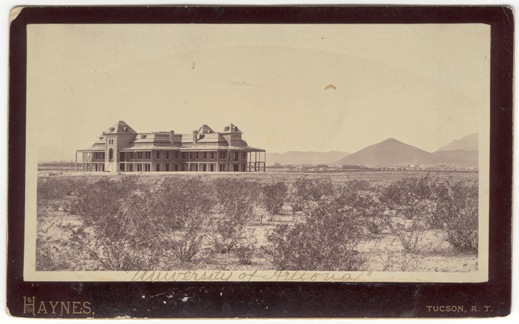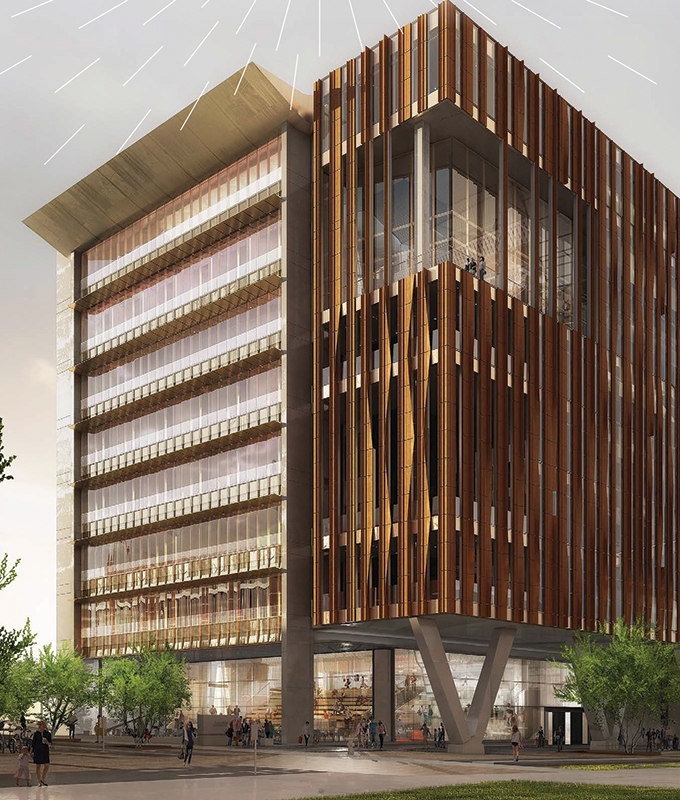
Established in 1885, The University of Arizona is widely recognized as a student-centric university and has been designated as a Hispanic Serving Institution by the U.S. Department of Education. UArizona is located in the southwestern region of the United States and sits on the original homelands of indigenous peoples who have stewarded this land since time immemorial. We recognize and acknowledge the people, culture and history that comprise the land where the Wildcat community currently resides.
UArizona is a land-grant university with two independently accredited medical schools. According to U.S. News & World Report, it is one of the nation's top public universities. UArizona ranked in the top 25 in 2018 in research expenditures among all public universities, according to the National Science Foundation, and is a leading Research 1 institution with $687 million in annual research expenditures. The UA advances the frontiers of interdisciplinary scholarship and entrepreneurial partnerships as a member of the Association of American Universities (AAU). UArizona is one of just 62 leading public and private research universities in the U.S. in the AAU recognized for exceptionally strong research and academic programs. It benefits the state with an estimated economic impact of $4.1 billion annually.
As a land-grant institution, UArizona has a three-fold mission of teaching, research, and public service. A member of the Pacific 10 Athletic Conference since 1978, UArizona competes in 18 intercollegiate sports.
The University of Arizona Health Sciences
 The University of Arizona Health Sciences (UAHS) is the statewide leader in biomedical research and health professions training. The UArizona Health Sciences includes the Colleges of Medicine (Tucson and Phoenix), Nursing, Pharmacy, and the Mel and Enid Zuckerman College of Public Health, with main campus locations in Tucson and the growing Phoenix Biomedical Campus in downtown Phoenix. From these vantage points, the Health Sciences reaches across the state of Arizona and the greater Southwest to provide cutting-edge health education, research and community outreach services. A major economic engine, the Health Sciences employs nearly 5,000 people, has approximately 900 faculty members and garners $200 million in research grants and contracts annually. It is accredited by the Joint Commission on Accreditation of Healthcare Organizations.
The University of Arizona Health Sciences (UAHS) is the statewide leader in biomedical research and health professions training. The UArizona Health Sciences includes the Colleges of Medicine (Tucson and Phoenix), Nursing, Pharmacy, and the Mel and Enid Zuckerman College of Public Health, with main campus locations in Tucson and the growing Phoenix Biomedical Campus in downtown Phoenix. From these vantage points, the Health Sciences reaches across the state of Arizona and the greater Southwest to provide cutting-edge health education, research and community outreach services. A major economic engine, the Health Sciences employs nearly 5,000 people, has approximately 900 faculty members and garners $200 million in research grants and contracts annually. It is accredited by the Joint Commission on Accreditation of Healthcare Organizations.
In the summer of 2020, the Health Sciences Innovation Building (HSIB) opened. It is a state-of-the-art, 220,000 square foot instructional space near the Medical Research Building (MRB) on the UA Health Sciences Campus. The HSIB offers flexible, large, medium and small group/team learning areas and clinical labs and simulation centers for a broad spectrum of instructional applications.
The UAHS Library maintains a collection of 165,000 volumes and 3,500 journals. The library is open 24 hours every day, except Christmas and New Year's Day. (See link for access during COVID-19.)
The University of Arizona College of Medicine – Tucson delivers cutting-edge programs in medical education, highly innovative and collaborative research opportunities, as well as advanced patient care in an environment where inclusive excellence and diversity create a foundation for community responsive action. Founded on the campus of the University of Arizona in 1967 as the state’s first MD degree granting college and a resource for the people of Arizona, today the UArizona College of Medicine ranks among the top medical schools in the nation for research, teaching and primary care. From an initial class of just 32 students, the UArizona College of Medicine today has graduated more than 4,000 physicians. College of Medicine students, faculty, staff, and alumni today continue more than 50 years of service in advancing medical care, biomedical research and knowledge in Arizona — and around the world.

